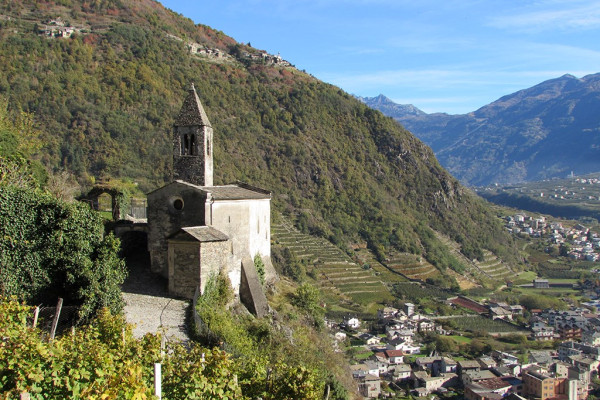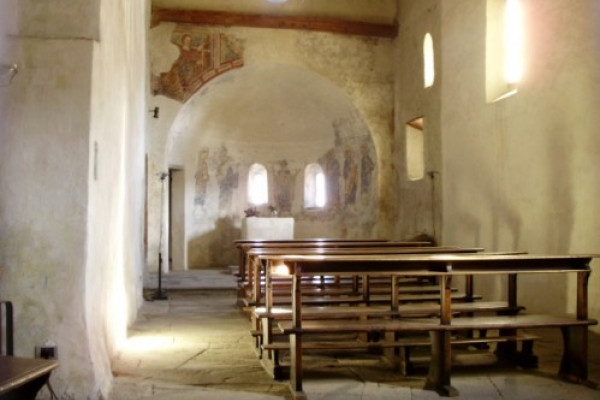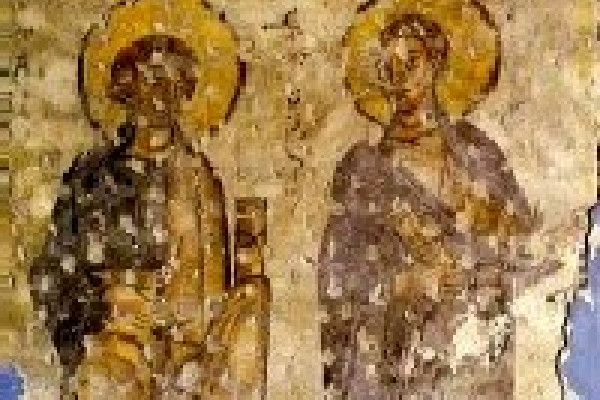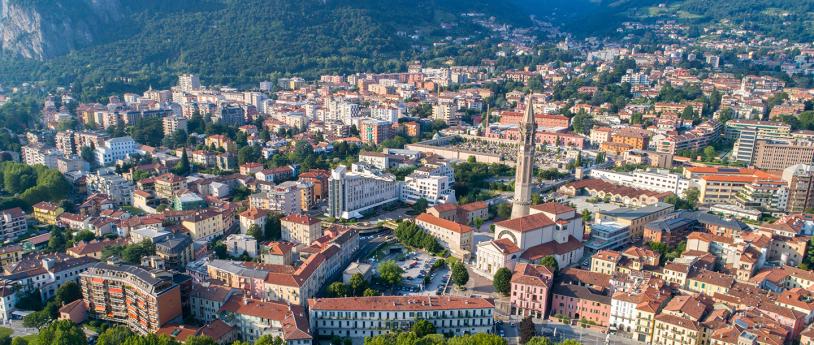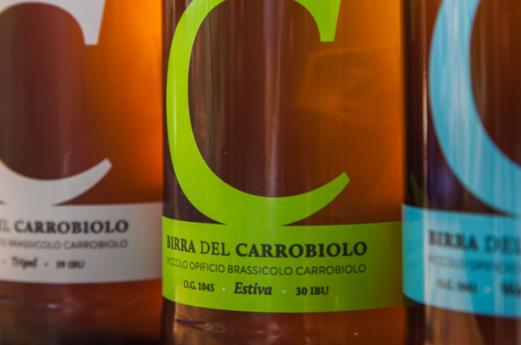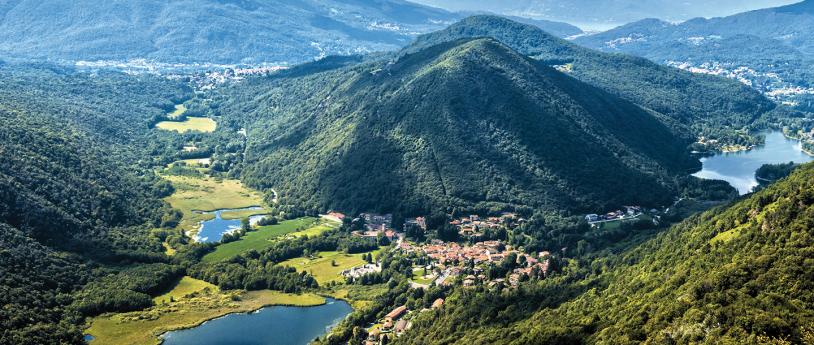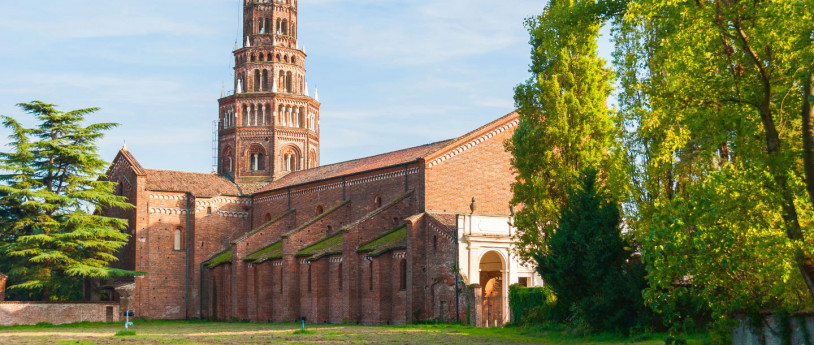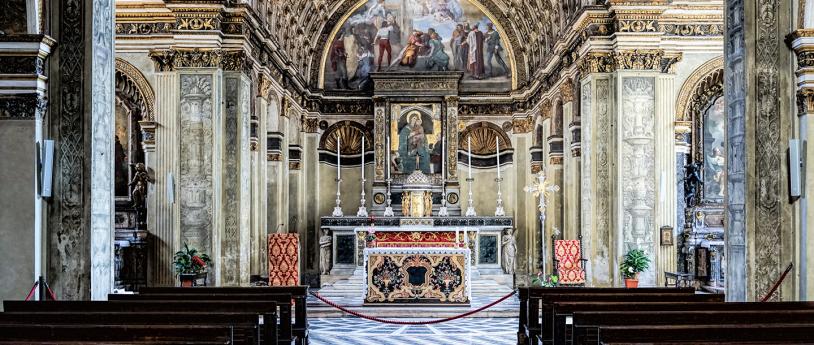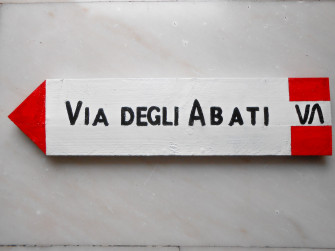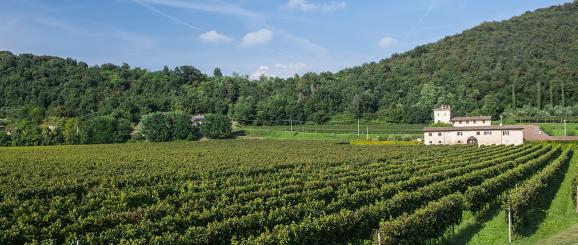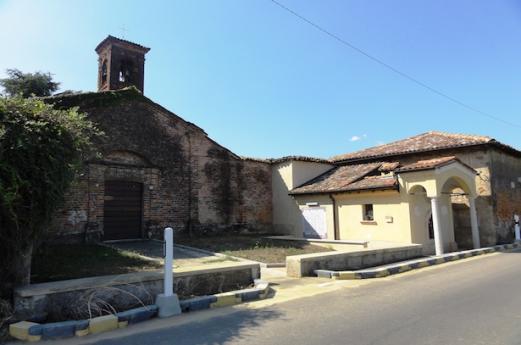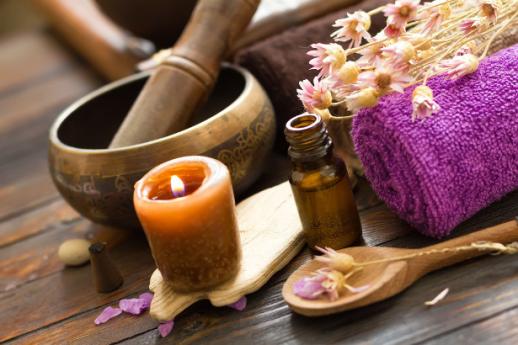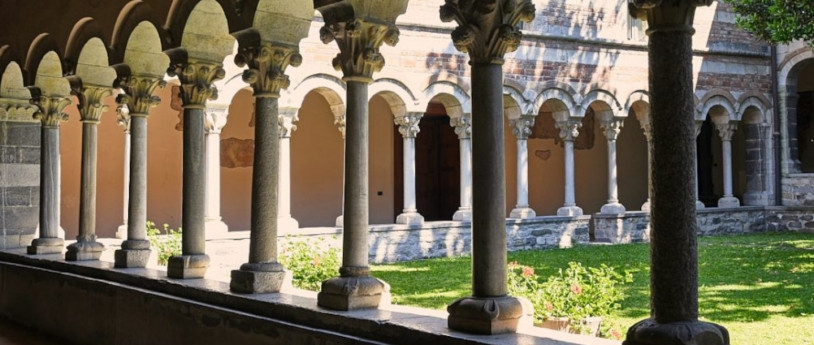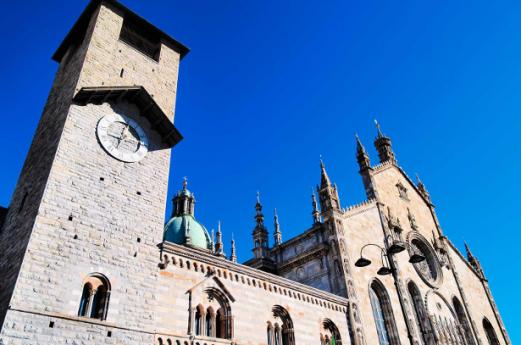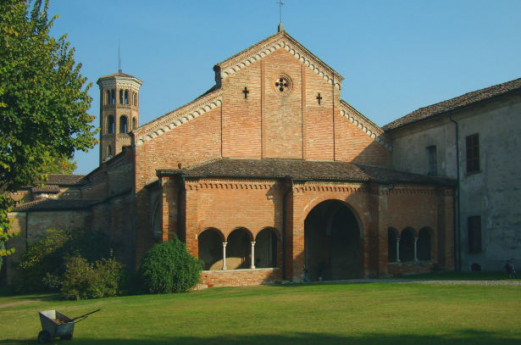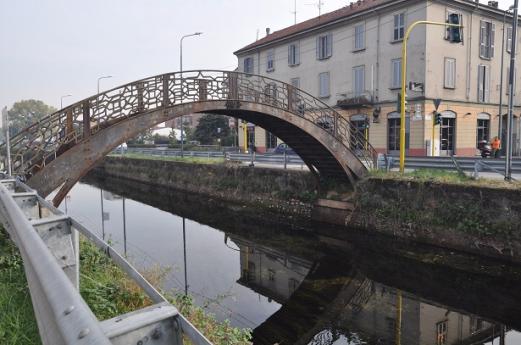- Religious Tourism
- Art & Culture
- Villages
Discovering a mystical place--in Tirano
By taking this easy walk you can come to a place absolutely cut off from the hustle and bustle and enjoy wonderful views and take a trip into the past...But let's proceed in order!
Where are we? In Tirano, a town located on the eastern edge of the middle Valtellina plain, well known because it is the starting point of the famous UNESCO World Heritage Rhaetian Railway line (the little red train for short), but often heard of only as a transit point on the way to the ski paradises of upper Valtellina.
Yet precisely because of its strategic location at the confluence of Val Poschiavo and Valtellina, just a few kilometers as the crow flies from Bresciano, Tirano has been at the center of Valtellina's historical events for centuries.
In this context, the place I want to tell you about is closely reminiscent of the "intermediary" function of these areas and particularly that of hospitality: I want to take you to the Xenodochio and the Church of St. Perpetua.
Getting there is not difficult nor, much less, long or strenuous. You start from the SS 38 by taking a small road, Via Ragno, which turns off to the left (Sondrio-Tirano direction) just before the large brick-colored building of the Villa di Tirano Hydroelectric Power Plant. Follow the road for about 200 meters and then turn right into a steep, narrow road that, after passing between a few houses, comes to a hairpin bend on which there is a post with hiking signs. Take, then, the road that turns to the right (northeast) from the hairpin bend. You pass over the penstock of the power plant continuing, slightly uphill, among the vineyards while the view of Tirano opens up. The small road is nothing more than the old mule track that led to Val Poschiavo, to the Bernina Pass and then to the Engadine.
The climb also takes us past an old mansion that, although abandoned, is striking for the elegance and solidity of its structure. Unfortunately, only a few traces remain of the frescoes that decorated its facades, but, on the whole, the building has retained its strong personality that cannot leave us indifferent; indeed, this place is called Cà dei Spìrit (house of the spirits) by the Tyroleans and holds the terrible secret of one of the many battles between the Devil, incarnated in a huge black spider, and the Virgin Mary. Having passed this building, the only survivor of a small cluster of houses, in a few minutes we reach the point where the concrete of the roadbed gives way again to the original cobblestones of the mule track. We are now in front of our destination.
The Romanesque church of Santa Perpetua rises steeply on a cliff located at the entrance to the Poschiavo Valley, on its hydrographic right. From up there it overlooks the square of the Sanctuary of the Madonna of Tirano and the whole village. This sanctuary is one of the most important religious monuments in the province of Sondrio, built in 1509 on the site where, the previous year, the Blessed Virgin had appeared to Blessed Mario Omodei, and is the most visited and famous place in Tirano.
The small church of St. Perpetua, on the other hand, which is not opened regularly given the scarcity of visitors, dates back to the 11th century and was for hundreds of years a nodal point of the communication system that, via the Bernina, united the Rhine and Inn valleys with the Valtellina and Brescian areas. Next to the sacred building, the walls of the xenodochio, which served as a hostel and refreshment point for wayfarers, pilgrims and merchants, are still visible. On the same route, they could further stop at the xenodochio of San Romerio, in Val Poschiavo, and at the one attached to the church of San Pietro, near the Aprica pass.
The small, very simple building, with a single apsidal hall and mullioned cell bell tower, revealed, during the 1987 restorations, a cycle of frescoes in the apse that had until then remained hidden under layers of plaster. On the wall, interrupted by two single-lancet openings, to which the ancient masonry altar is still leaning, is the titular saint (identified by the inscription "S. Perpetua") in a frontal position, with her arms raised in the praying position; on the left is St. Peter ("S. Petrus"), accompanied by another, unidentifiable apostle, who was probably followed by a second, who disappeared due to the opening of a door; on the right is St. Paul ("S. Paulus") with the apostles Matthew and Jude ("S. Mafeus," "S. Iudas") beside him. In the lower band is a painted velarium, decorated with large stars.
In the arch, however, one can see an Annunciation made in a more recent style than the figures in the apse. In the apsidal basin must have been a blessing Christ in mandorla. The figures, characterized by great expressive force and plastic vigor, enhanced by the balanced range of colors, with gray-blue and orange-yellow dominants, can all be placed in the 12th century, and are among the oldest pictorial works in Valtellina.
The uniqueness and ancient flavor of these frescoes, combined with the evocative location of the reception complex once run by monks who devoted their energies to working the surrounding vineyards, bending and shaping the landscape through typical terracing, will surely transport you on a journey back in time...if you would like to be led "by the hand" to discover this and other places...contact me!
-
(Cover image: valtellina.it)
Text by SARA NUZZI, ConfGuide-GITEC licensed guide
If you enjoyed this story, CLICK HERE to discover its various itinerary suggestions.
